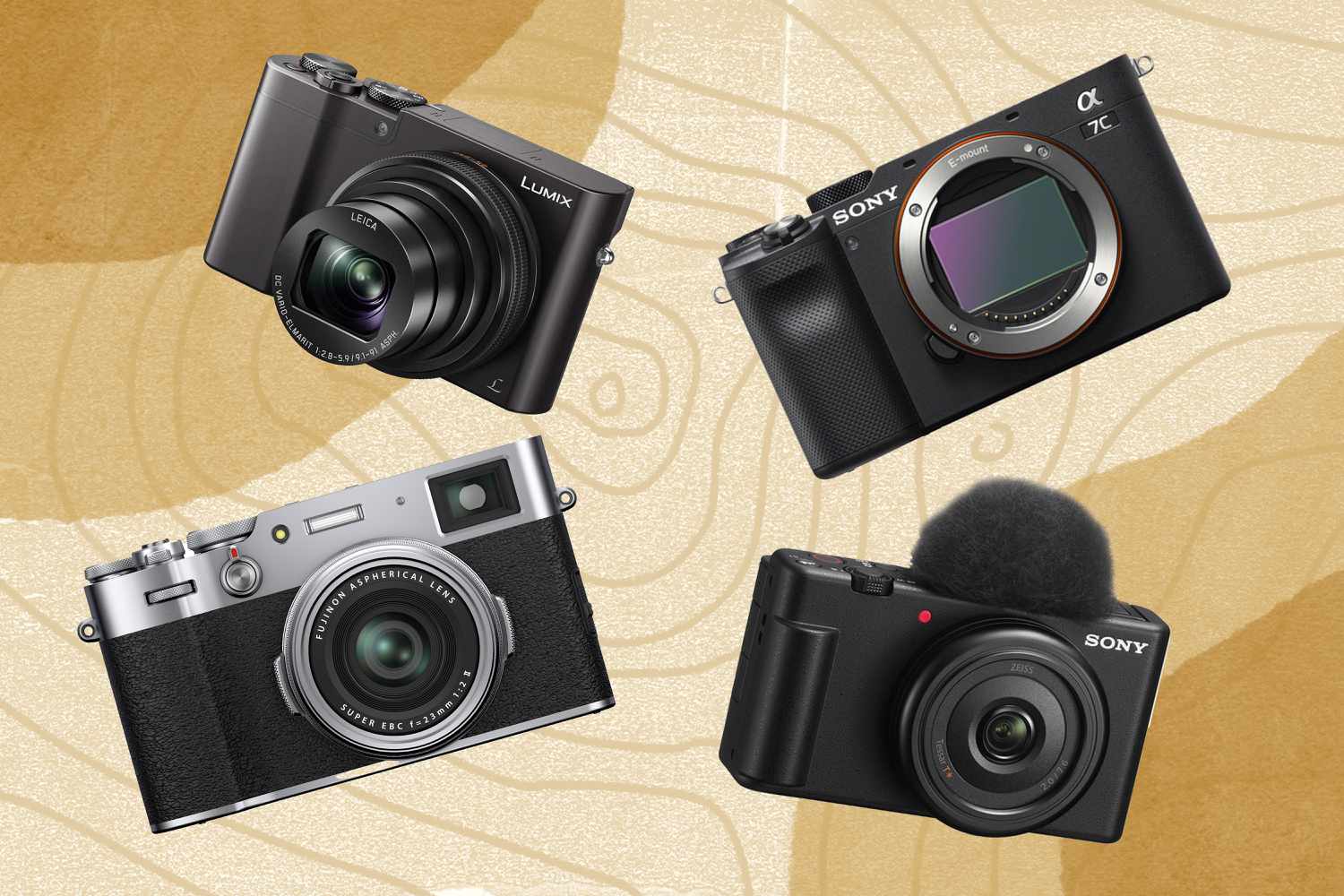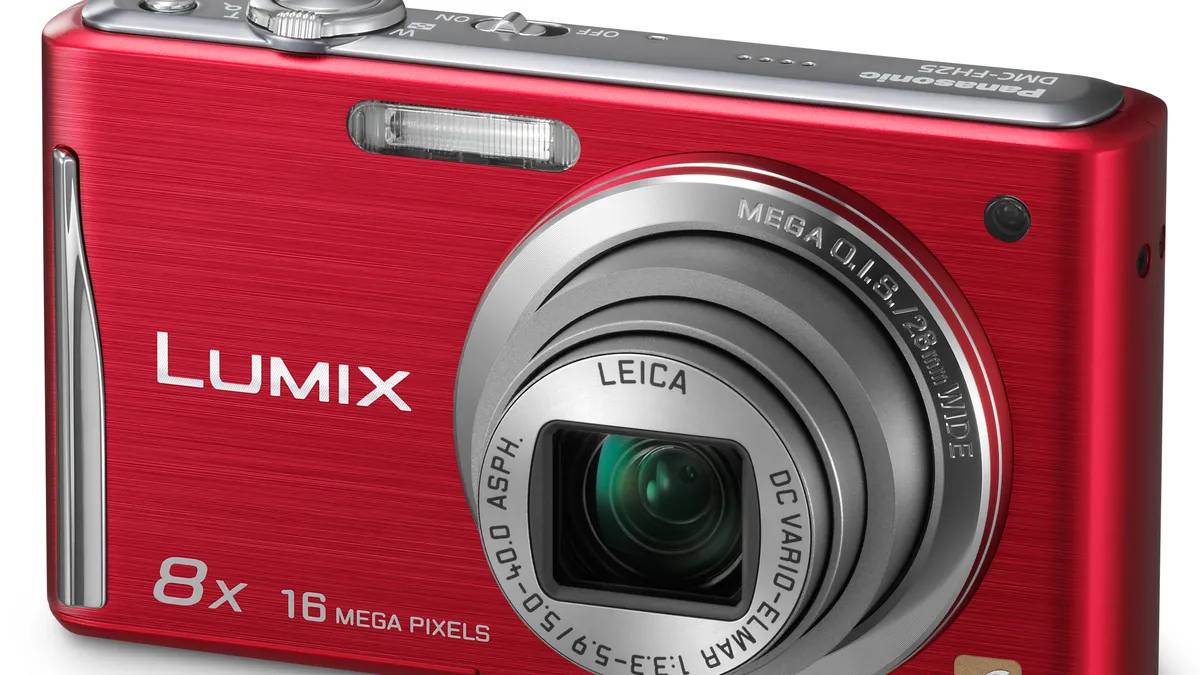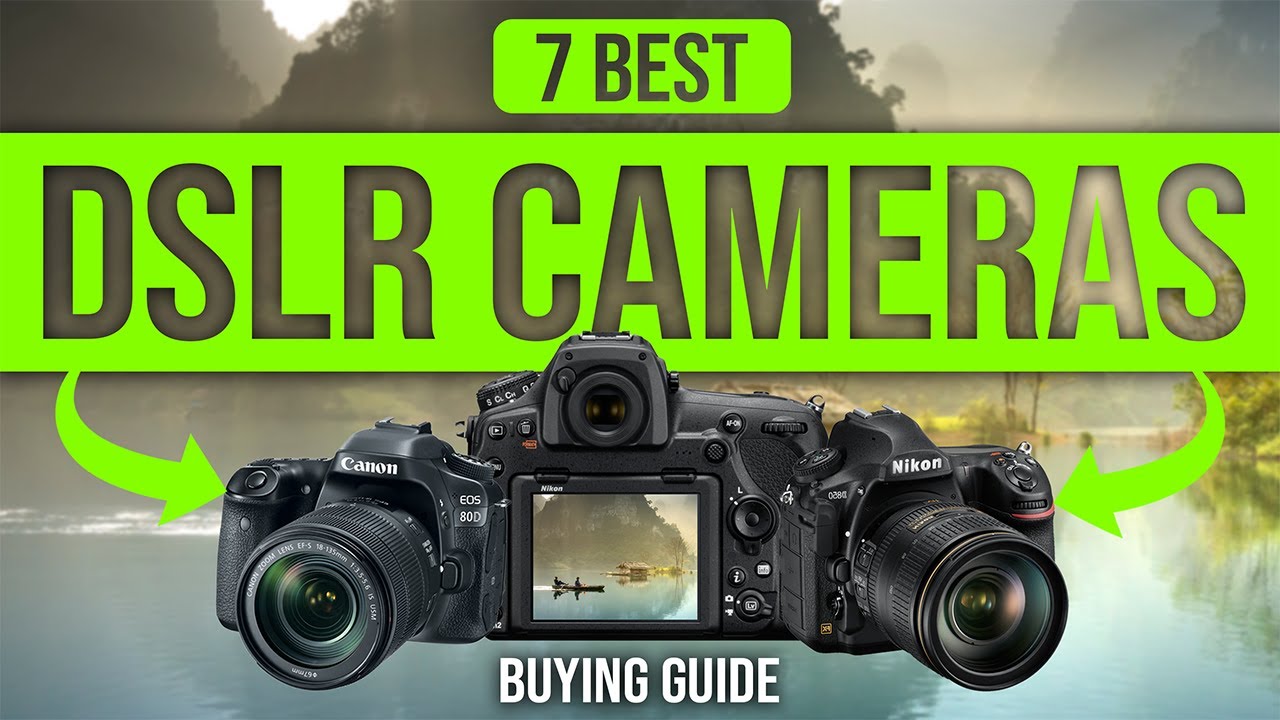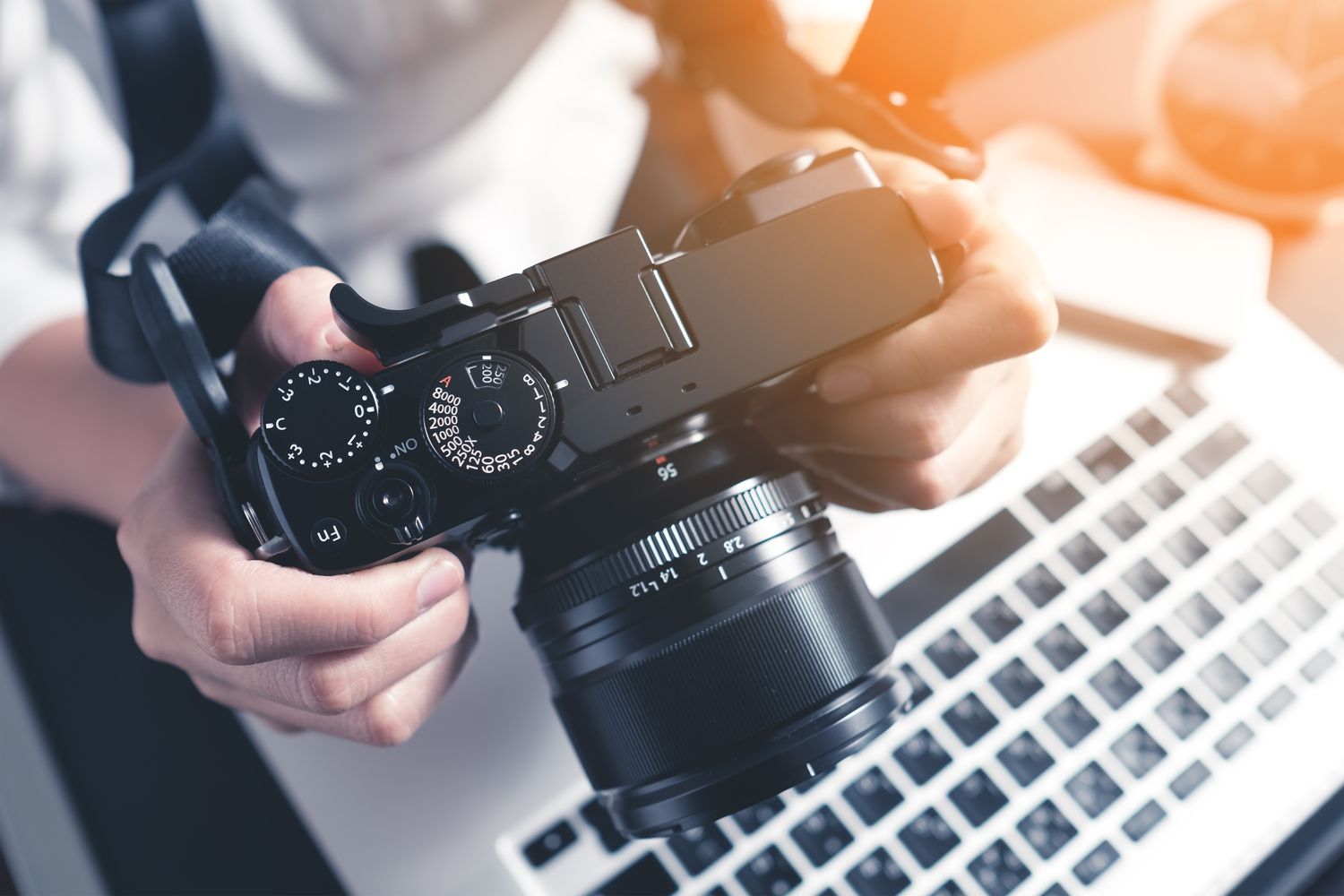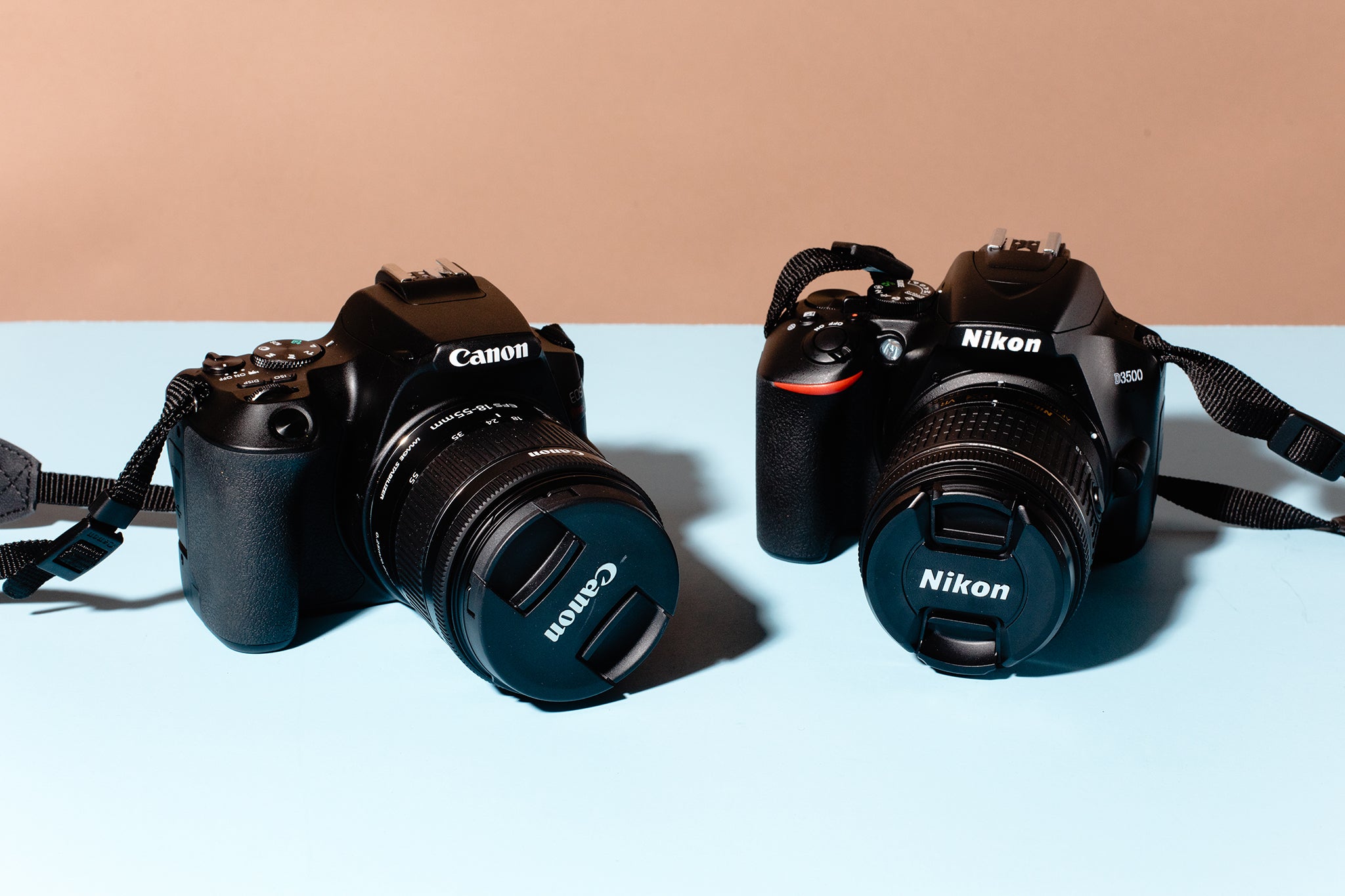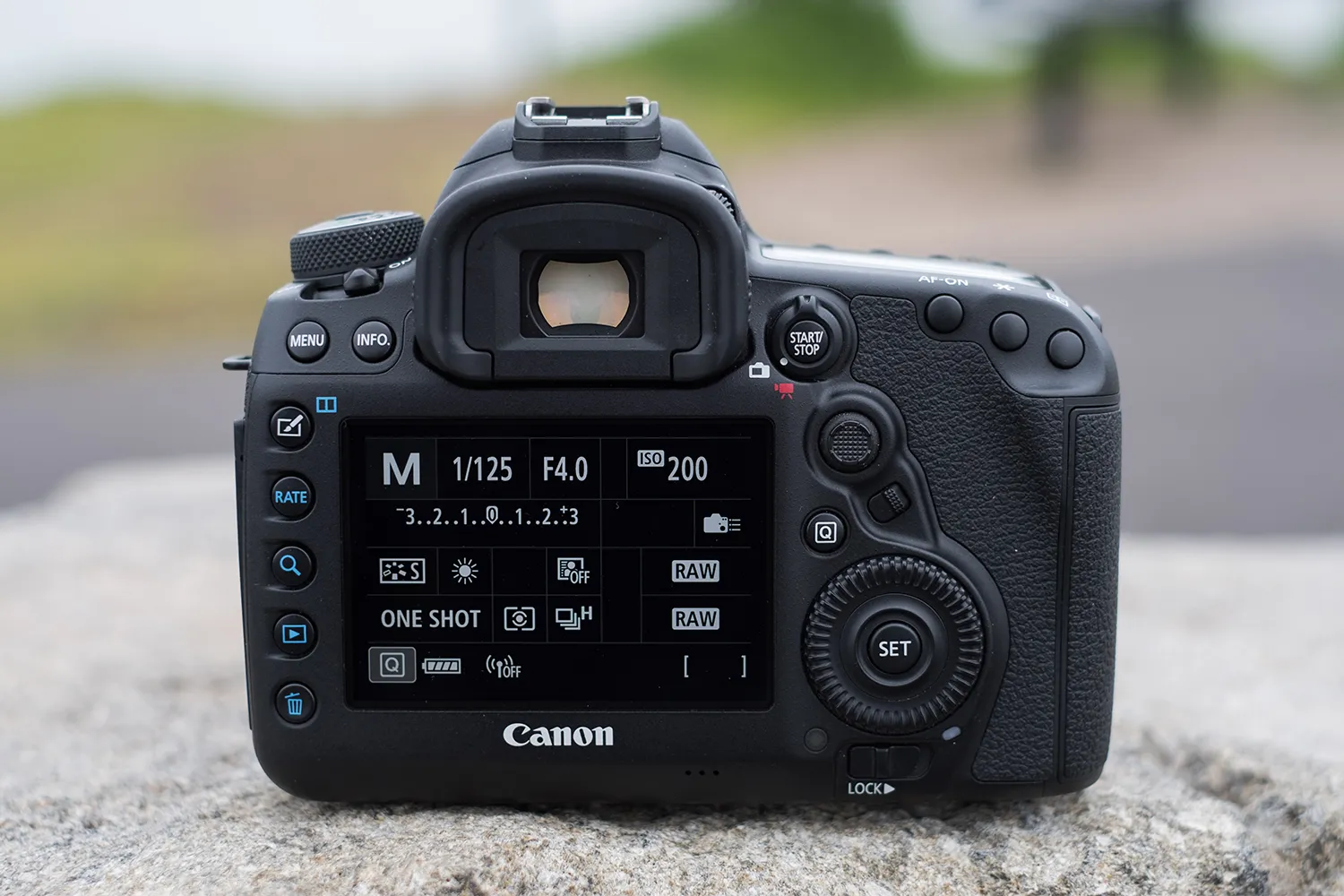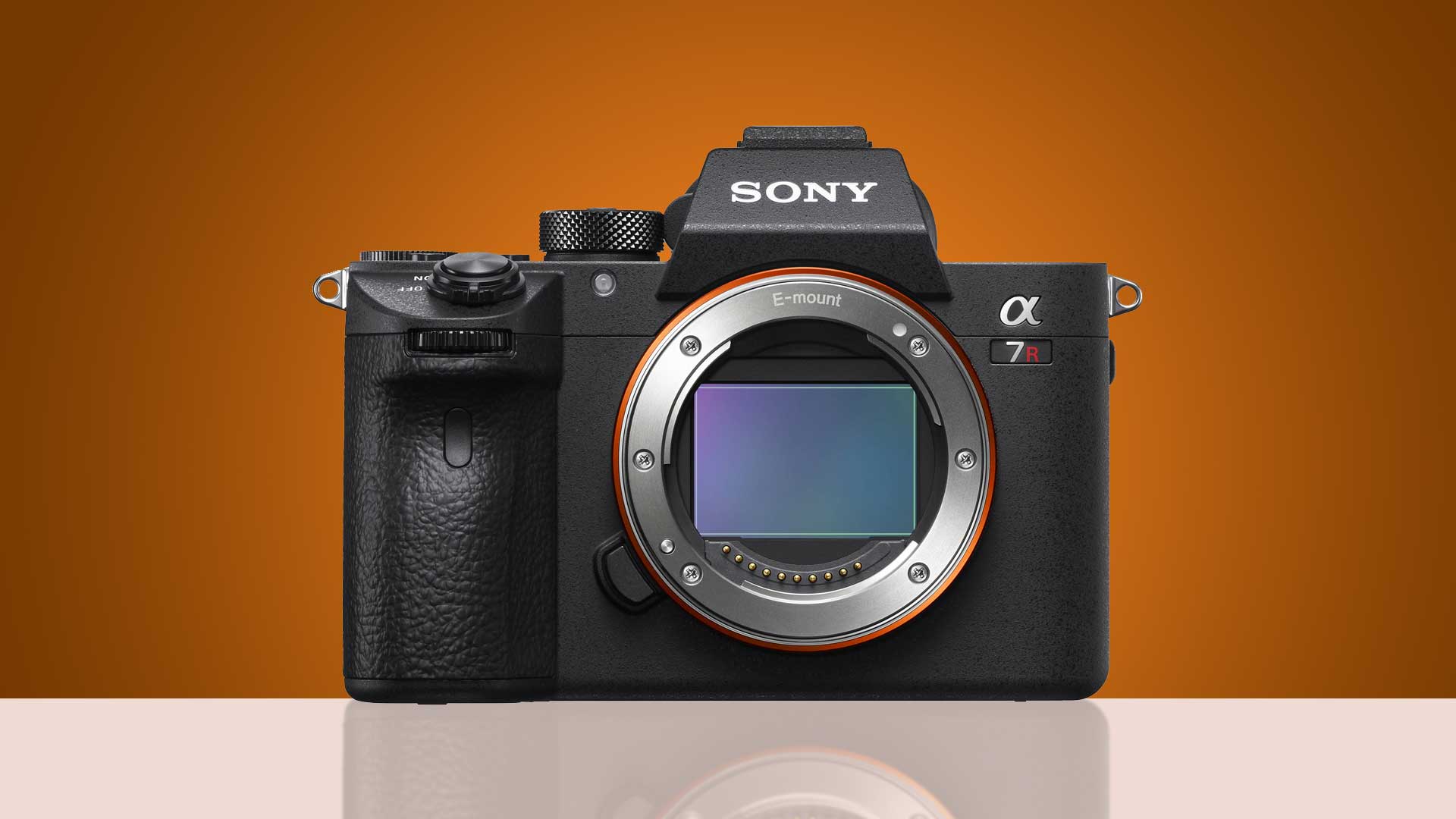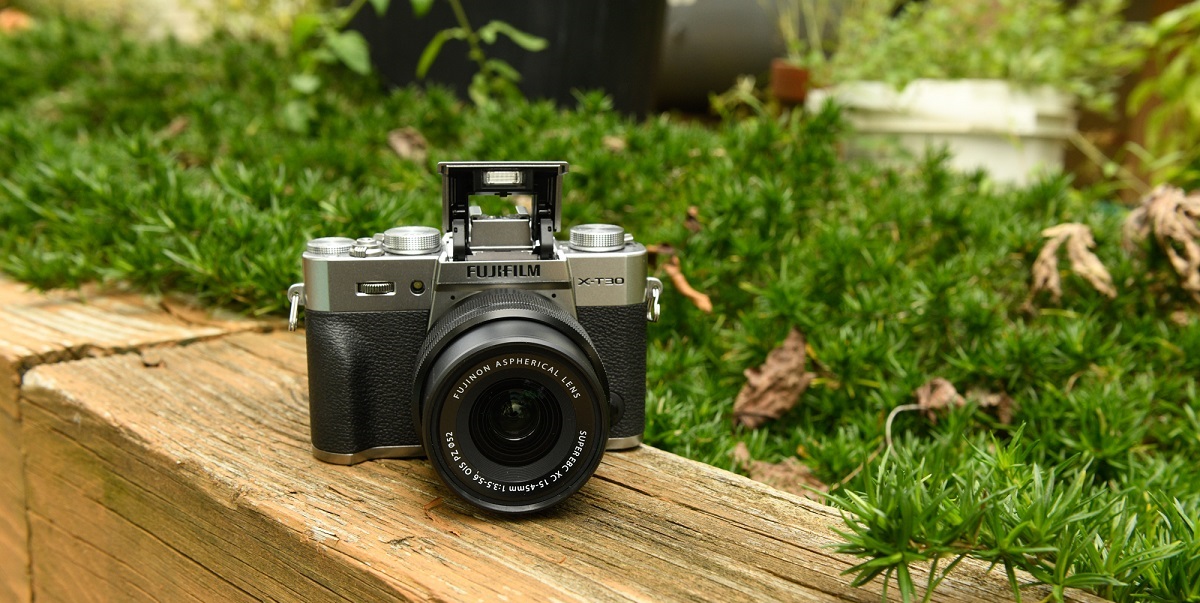Introduction
Digital cameras have become an indispensable tool in today’s world, allowing us to capture and preserve cherished moments with just a click of a button. But have you ever wondered what makes a digital camera tick? One of the key components that determines the quality of the images captured is the image sensor. Understanding the different types of image sensors and their pros and cons can help you make an informed decision when choosing the best camera for your needs.
Image sensors are responsible for converting light into electronic signals, which are then processed to create digital images. There are two main types of image sensors commonly used in digital cameras: CCD (Charge-Coupled Device) and CMOS (Complementary Metal-Oxide-Semiconductor). Each type has its own strengths and weaknesses, and choosing the right one depends on various factors such as image quality, low light performance, speed, and more.
In this article, we will explore the differences between CCD and CMOS sensors and discuss their respective advantages and disadvantages. We will also provide insights into the factors that you should consider when selecting a digital camera sensor, such as sensor size, megapixels, low light performance, dynamic range, lens compatibility, and more. By the end of this article, you will be equipped with the knowledge to make an informed decision about the best sensor for your digital camera needs.
Understanding Image Sensors
To grasp the importance of image sensors in digital cameras, it is crucial to have a basic understanding of how they work. Image sensors are electronic devices that capture and convert light into electrical signals. These signals are then processed to create digital images. The quality and efficiency of image sensors play a significant role in the overall performance of a camera.
Image sensors consist of millions of tiny sensors, also known as photosites or pixels, which act as light receptors. When light hits these sensors, they generate an electrical charge proportional to the amount of light received. This charge is then converted into a digital signal that represents the brightness and color information captured by each pixel on the sensor.
The two primary types of image sensors used in digital cameras are CCD (Charge-Coupled Device) and CMOS (Complementary Metal-Oxide-Semiconductor). Each type utilizes a different technology to capture and process light, resulting in unique strengths and weaknesses.
CCD sensors have been around for a longer time and are known for their excellent image quality. They use a complex structure of capacitors to accumulate and transfer charges. CCD sensors tend to have higher pixel sizes, allowing them to capture more light and produce images with lower noise levels. However, CCD sensors consume more power, resulting in slower operation and limited video capabilities.
On the other hand, CMOS sensors have gained popularity due to their lower power consumption and faster operation. Unlike CCD sensors, CMOS sensors utilize a different architecture that includes individual amplifiers for each pixel. This allows CMOS sensors to read data from multiple pixels simultaneously, resulting in faster image capturing and continuous shooting capabilities. However, CMOS sensors generally exhibit higher noise levels, which can affect image quality, especially in low light conditions.
Overall, both CCD and CMOS sensors have their own advantages and disadvantages. The choice between the two depends on specific requirements and preferences, such as image quality, power efficiency, speed, and budget constraints. In the following sections, we will delve deeper into the pros and cons of each type of sensor and help you determine which one might be best suited for your photographic needs.
Different Types of Image Sensors
When it comes to image sensors, the two most common types used in digital cameras are Charge-Coupled Device (CCD) and Complementary Metal-Oxide-Semiconductor (CMOS). While they both serve the purpose of capturing light and converting it into electronic signals, they differ in terms of technology, performance, and suitability for various photography applications.
CCD sensors have a longer history and were the dominant image sensor technology for many years. They use a complex structure of capacitors to accumulate and transfer charges. CCD sensors typically have larger pixel sizes, allowing them to capture more light and produce higher-quality images with better dynamic range and color accuracy. They are often favored for applications where image quality is paramount, such as professional photography and scientific imaging.
On the other hand, CMOS sensors have gained significant popularity in recent years. CMOS sensors use an active pixel sensor design, where each pixel has its own amplifier and digitization circuitry. This allows for faster data readout, lower power consumption, and the ability to capture video with ease. CMOS sensors excel in applications where speed and power efficiency are crucial, such as mobile devices, action cameras, and consumer-level digital cameras.
Another type of image sensor that has gained attention is the backside-illuminated (BSI) sensor. BSI sensors are designed to improve low light performance by rearranging the sensor’s circuitry to allow light to reach the photodiode directly. This results in increased sensitivity to light and reduced noise, delivering enhanced image quality in challenging lighting conditions. BSI sensors are commonly used in compact cameras, smartphones, and mirrorless cameras.
Additionally, there are other specialized image sensor technologies available. For instance, Foveon X3 sensors use a unique layered design that captures color information at different depths, resulting in detailed and vibrant images. Infrared sensors, as the name suggests, are designed to capture infrared light, making them ideal for applications such as surveillance, night vision, and environmental monitoring.
When considering the different types of image sensors, it’s important to understand their strengths and weaknesses and match them to your specific photography needs. Factors such as image quality, low light performance, speed, and power consumption should be taken into account. In the next sections, we will dive deeper into the pros and cons of CCD and CMOS sensors, which are the most common and widely used in digital cameras today.
CCD (Charge-Coupled Device) Sensors
CCD sensors, short for Charge-Coupled Device sensors, have been widely used in digital cameras for many years. Known for their excellent image quality, CCD sensors use a unique technology to capture and process light. Let’s explore the pros and cons of CCD sensors to better understand their strengths and limitations.
One of the main advantages of CCD sensors is their ability to produce images with outstanding dynamic range and color accuracy. CCD sensors typically have larger pixel sizes, allowing them to capture more light and provide better image quality, especially in well-lit conditions. This results in images with vibrant colors, fine details, and low noise levels.
CCD sensors are also well-suited for applications that require precision and low light performance. Their larger pixel sizes enable them to collect more photons in low light situations, resulting in images with reduced noise and better sensitivity. This makes CCD sensors an excellent choice for professional photographers who frequently shoot in challenging lighting conditions or need high-quality images with minimal noise.
However, there are some downsides to CCD sensors as well. One of the main drawbacks is their higher power consumption. CCD sensors require more power to operate and generate heat, which can lead to shorter battery life and increased camera weight. Additionally, CCD sensors have slower readout speeds compared to CMOS sensors, which can limit their performance in situations that require fast continuous shooting or video recording.
Another aspect to consider is the cost of CCD sensors. Due to their complex manufacturing process and lower demand, CCD sensors tend to be more expensive compared to CMOS sensors. This can be a determining factor for budget-conscious individuals or those who do not require the highest level of image quality.
In summary, CCD sensors offer exceptional image quality, dynamic range, and color accuracy, making them a preferred choice for professionals and enthusiasts who prioritize image quality over other factors. However, their higher power consumption, slower readout speeds, and higher cost may pose challenges for certain applications. Understanding the strengths and limitations of CCD sensors is essential when choosing a camera that best suits your specific needs.
CMOS (Complementary Metal-Oxide-Semiconductor) Sensors
CMOS sensors, short for Complementary Metal-Oxide-Semiconductor sensors, have gained significant popularity in recent years and are commonly used in digital cameras. These sensors use a different technology compared to CCD sensors, offering unique advantages and disadvantages. Let’s take a closer look at the pros and cons of CMOS sensors.
One of the main advantages of CMOS sensors is their lower power consumption. CMOS sensors require less power to operate, resulting in longer battery life for digital cameras. This makes them ideal for portable devices and situations where long battery life is crucial. The lower power requirements also contribute to less heat generation in the camera, increasing overall efficiency and reducing the risk of overheating.
Another benefit of CMOS sensors is their faster readout speeds. Each pixel in a CMOS sensor has its own amplifier and digitization circuitry, allowing for parallel processing and faster data readout. This results in higher frame rates and rapid continuous shooting capabilities, making CMOS sensors suitable for capturing fast-paced action or sports photography.
In addition to speed and efficiency, CMOS sensors have evolved to provide improved image quality over the years. While earlier CMOS sensors had limitations in terms of noise levels and dynamic range, advancements in technology have mitigated these challenges. Modern CMOS sensors now offer competitive image quality, with better noise performance and enhanced dynamic range, approaching the qualities once associated with CCD sensors.
However, one notable disadvantage of CMOS sensors is their lower pixel size compared to CCD sensors. Smaller pixel sizes can result in reduced light-gathering abilities, which can impact image quality, especially in low light conditions. Despite improvements, CMOS sensors still tend to have higher noise levels compared to CCD sensors, particularly in challenging lighting situations.
Another consideration with CMOS sensors is their susceptibility to rolling shutter effects. Unlike CCD sensors, CMOS sensors read data line by line, which can lead to distorted images when capturing fast-moving subjects or when there is camera movement during exposure. However, many modern cameras now incorporate technologies to minimize the rolling shutter effect, mitigating this concern.
In summary, CMOS sensors offer benefits such as lower power consumption, faster readout speeds, and increasingly competitive image quality. They are widely utilized in a range of digital cameras, from consumer-level models to professional-grade devices. While CMOS sensors may exhibit higher noise levels and rolling shutter effects, these limitations are continually being addressed and improved with advancements in technology. Understanding the strengths and weaknesses of CMOS sensors allows for an informed decision when selecting a camera that aligns with your specific photography needs.
Pros and Cons of CCD Sensors
CCD (Charge-Coupled Device) sensors have been popular in digital cameras for their exceptional image quality and other unique features. However, they also have their own set of advantages and disadvantages that should be considered when choosing a camera. Let’s explore the pros and cons of CCD sensors.
One of the main advantages of CCD sensors is their ability to produce images with excellent dynamic range and color accuracy. CCD sensors typically have larger pixel sizes, allowing them to capture more light and provide better image quality. This results in images with vibrant colors, fine details, and reduced noise levels, especially in well-lit conditions. For photographers who prioritize high-quality images, CCD sensors often remain their preferred choice.
Another advantage of CCD sensors is their suitability for low light conditions. Due to their larger pixel sizes, CCD sensors are better at collecting photons in low light situations. This results in images with reduced noise levels and improved sensitivity, making them ideal for capturing clear and detailed images in challenging lighting scenarios. Professional photographers or those who frequently shoot in dimly lit environments benefit greatly from the low-light performance offered by CCD sensors.
However, there are some drawbacks associated with CCD sensors. One major limitation is their higher power consumption. CCD sensors require more power to operate, which can lead to shorter battery life and increased camera weight. Additionally, the heat generated by CCD sensors can pose potential issues, requiring additional measures to dissipate the heat and prevent overheating. This power consumption drawback is a significant consideration for those who prioritize long battery life or need a lightweight camera.
Another disadvantage of CCD sensors is their slower readout speeds. CCD sensors transfer charges serially through a complex structure of capacitors, resulting in slower data readout. This limitation can affect the camera’s continuous shooting capabilities and video recording performance. For photography genres that require fast and continuous capturing, such as sports or wildlife photography, CCD sensors may not provide the desired speed and responsiveness.
Moreover, CCD sensors tend to be more expensive compared to CMOS sensors. The complex manufacturing process and lower demand contribute to the higher cost of CCD sensors. Individuals with budget constraints or those who do not require the highest level of image quality might find CCD sensors less appealing due to their higher price point.
In summary, CCD sensors offer exceptional image quality, dynamic range, and color accuracy, making them a preferred choice for professionals and enthusiasts who prioritize image quality over other factors. However, their higher power consumption, slower readout speeds, and higher cost may pose challenges for certain applications. Understanding the strengths and limitations of CCD sensors is essential when choosing a camera that best suits your specific needs.
Pros and Cons of CMOS Sensors
CMOS (Complementary Metal-Oxide-Semiconductor) sensors have gained significant popularity in recent years and are widely used in digital cameras. They offer a range of advantages and disadvantages that should be taken into consideration when choosing a camera. Let’s explore the pros and cons of CMOS sensors.
One of the main advantages of CMOS sensors is their lower power consumption. Compared to CCD sensors, CMOS sensors require less power to operate, resulting in longer battery life for digital cameras. This makes them ideal for portable devices and situations where extended battery life is crucial, such as outdoor photography or travel. The lower power requirements also contribute to a more efficient and lightweight camera design.
Another benefit of CMOS sensors is their faster readout speeds. Each pixel in a CMOS sensor has its own amplifier and digitization circuitry, enabling parallel processing and rapid data readout. This allows for higher frame rates and seamless continuous shooting capabilities, making CMOS sensors well-suited for capturing fast-paced action or sports photography.
In recent years, CMOS sensors have seen significant advancements in image quality. While earlier models had limitations in terms of noise levels and dynamic range, modern CMOS sensors now offer competitive image quality. They have improved noise performance, enhanced dynamic range, and better low light capabilities, approaching the qualities once associated with CCD sensors. These advancements have made CMOS sensors an attractive choice for photographers who want a balance between image quality and performance.
However, there are a few downsides to consider with CMOS sensors. One of the main limitations is their smaller pixel size compared to CCD sensors. Smaller pixels can result in reduced light-gathering abilities, which can impact image quality, particularly in low light conditions. Despite improvements, CMOS sensors generally exhibit higher noise levels compared to CCD sensors, especially in challenging lighting situations.
Another consideration is the potential for rolling shutter effects. Unlike CCD sensors, CMOS sensors read data line by line, which can lead to distorted images when capturing fast-moving subjects or with camera movement during exposure. However, many modern cameras now incorporate technologies to minimize the rolling shutter effect, mitigating this concern to a certain extent.
In terms of cost, CMOS sensors tend to be more affordable compared to CCD sensors. The manufacturing process for CMOS sensors is less complex, and they are in higher demand, which results in a more cost-effective option for users. The affordability of CMOS sensors makes them accessible to a wider range of photographers, including enthusiasts and beginners.
To summarize, CMOS sensors offer advantages such as lower power consumption, faster readout speeds, and increasingly competitive image quality. They have become the go-to choice for various digital cameras, from consumer-level models to professional-grade devices. While CMOS sensors may have limitations in terms of noise levels, dynamic range, and rolling shutter effects, these drawbacks are continually being addressed and improved through technological advancements. Understanding the strengths and weaknesses of CMOS sensors allows for a well-informed decision when selecting a camera that aligns with your specific photography needs.
Which Sensor is Better?
The question of which sensor, CCD (Charge-Coupled Device) or CMOS (Complementary Metal-Oxide-Semiconductor), is better is subjective and depends on various factors. Both sensors have their own strengths and weaknesses, and the choice between them ultimately comes down to personal preferences and specific photography needs.
CCD sensors are known for their excellent image quality, dynamic range, and color accuracy. They have larger pixel sizes, allowing them to capture more light and produce high-quality images. CCD sensors are well-suited for applications where image quality is paramount, such as professional photography and scientific imaging. They perform exceptionally well in well-lit conditions and offer better low light performance compared to CMOS sensors. If image quality and low-light performance are your top priorities, then CCD sensors may be the better choice.
On the other hand, CMOS sensors have gained significant popularity due to their lower power consumption, faster readout speeds, and improved image quality. CMOS sensors are more power-efficient, allowing for longer battery life and lightweight camera designs. They offer faster continuous shooting capabilities and higher frame rates, making them ideal for capturing action or sports photography. While CMOS sensors traditionally had limitations in noise levels and dynamic range compared to CCD sensors, advancements in technology have narrowed the gap, and modern CMOS sensors now offer competitive image quality. If you prioritize power efficiency, speed, and versatility, CMOS sensors may be more suitable for your needs.
It’s important to consider other factors as well when determining which sensor is better for your photography needs. Sensor size plays a crucial role in image quality, with larger sensors generally offering better dynamic range and low light performance. Megapixels and resolution are also factors to consider, as they determine the level of detail and sharpness in your images. Additionally, factors such as low light performance, dynamic range, color accuracy, speed, and lens compatibility should be taken into account.
It’s worth noting that the industry trend has shifted towards CMOS sensors, which are now more commonly found in digital cameras of all types. Manufacturers have made significant advancements in CMOS technology, resulting in improved image quality and performance. However, this doesn’t diminish the capabilities and advantages of CCD sensors, which still excel in certain specialized areas.
In the end, the choice between CCD and CMOS sensors boils down to your specific needs and priorities as a photographer. Consider the type of photography you’re involved in, the lighting conditions you commonly encounter, and your desired level of image quality and performance. It’s recommended to try out different cameras with both CCD and CMOS sensors to see which one aligns better with your preferences and provides the desired results.
Factors to Consider When Choosing a Camera Sensor
When selecting a digital camera, one of the crucial factors to consider is the type of image sensor it utilizes. Whether it’s a CCD (Charge-Coupled Device) or CMOS (Complementary Metal-Oxide-Semiconductor) sensor, understanding your photography needs and preferences will help you make an informed decision. Here are some key factors to consider when choosing a camera sensor:
Sensor Size and Image Quality: The sensor size directly impacts image quality. Generally, larger sensors offer improved dynamic range, low-light performance, and better image quality. Full-frame sensors, for example, deliver exceptional image quality but come at a higher cost.
Megapixels and Resolution: Megapixels determine the level of detail and resolution of the images captured. Higher megapixel count can potentially produce larger prints or allow for cropping without significant loss of quality. However, it’s important to strike a balance between megapixels and other factors such as sensor size and noise performance, as higher megapixels might lead to increased noise levels in smaller sensors.
Low Light Performance: Consider the lighting conditions you commonly encounter in your photography. CCD sensors generally perform better in low light situations due to their larger pixel sizes and improved sensitivity to light. However, modern CMOS sensors have made significant advancements in low-light performance and can rival CCD sensors in this aspect.
Dynamic Range and Color Accuracy: Dynamic range refers to the ability of a sensor to capture a wide range of tones from shadow to highlight areas. Sensors with higher dynamic range produce images with more detail in the shadows and highlights. Color accuracy is also an essential factor, especially for photographers who work with color-sensitive subjects such as product photography or fashion photography. Both CCD and CMOS sensors have made advancements in these areas, so it’s important to research specific models and compare their performance.
Speed and Image Processing: Consider the speed and responsiveness you require in your photography. CMOS sensors offer faster readout speeds, allowing for rapid continuous shooting and higher frame rates. This is especially important for action or sports photography. Additionally, take into account the camera’s image processing capabilities, as it can significantly impact the overall performance and speed of the camera.
Lens Compatibility: Check the compatibility of the camera sensor with different lenses. Some sensors have specific lens mount systems, and it’s important to ensure that the lenses you intend to use are compatible with the camera’s sensor.
When choosing a camera, these factors should be considered collectively to ensure that they align with your specific photography needs. Each factor plays a role in capturing the desired images and achieving the desired performance and usability from your camera. It’s recommended to research and test different cameras with various sensor options to find the perfect fit that meets your requirements.
Sensor Size and Image Quality
When it comes to camera sensors, one of the critical factors that greatly influences image quality is the sensor size. The size of the sensor directly impacts the camera’s ability to capture light, resulting in differences in dynamic range, low-light performance, and overall image quality. Understanding the relationship between sensor size and image quality is essential when choosing a digital camera. Let’s explore this further.
Larger Sensors for Improved Image Quality: In general, larger sensors are known to produce better image quality. This is because larger sensors have larger individual pixels, which can capture more light and gather more image data. The increased light gathering capability of larger pixels results in enhanced dynamic range, improved low-light performance, and reduced noise levels in images. Larger sensors also tend to offer better color accuracy and finer details.
Full-Frame Sensors: Full-frame sensors are considered the gold standard in terms of image quality. Full-frame sensors have the same size as a traditional 35mm film frame, offering a wider field of view and better light gathering capabilities. These sensors excel in capturing detail-rich images with excellent dynamic range, color accuracy, and low-light performance. However, full-frame cameras are typically larger, more expensive, and may require larger lenses to cover the sensor size.
Crop Sensors: Crop sensors, also known as APS-C or Micro Four Thirds sensors, are smaller than full-frame sensors but are still capable of delivering impressive image quality. While they may not match the image quality of full-frame sensors, they offer a more affordable alternative without compromising on general performance. Crop sensors can capture sharp images with good dynamic range and low-light performance while maintaining a smaller form factor.
Medium Format Sensors: Medium format sensors are even larger than full-frame sensors and are commonly found in high-end professional cameras. These sensors offer the highest level of image quality, with exceptional detail, dynamic range, and color accuracy. Medium format cameras are primarily used in specialized fields such as commercial, fashion, and landscape photography.
It’s important to note that image quality is not solely determined by sensor size. Other factors such as pixel size, pixel density, and image processing algorithms also play a significant role. Cameras with smaller sensors can still produce excellent image quality if they have well-designed sensors and advanced processing capabilities.
When considering sensor size and image quality, it’s vital to match your specific needs and budget. Full-frame sensors deliver the highest image quality but come at a premium price. Crop sensors provide a balance of image quality and affordability, making them suitable for a wide range of photographers. Medium format sensors offer unparalleled image quality but are typically reserved for professionals or those with specific requirements.
Ultimately, it’s important to consider the shooting conditions, desired image quality, and budget when choosing a camera based on sensor size. Assess your requirements, do thorough research, and try out different cameras to find the right balance that meets your needs and provides the desired level of image quality for your photography endeavors.
Megapixels and Resolution
When it comes to digital cameras, one of the most commonly discussed specifications is the number of megapixels a camera sensor possesses. Megapixels refer to the resolution of an image, indicating the number of pixels that make up the image. Understanding the relationship between megapixels and resolution is crucial when choosing a digital camera. Let’s delve deeper into this topic.
Megapixels and Image Detail: The number of megapixels a camera has directly affects the level of detail in the captured image. Higher megapixel counts can potentially produce images with more detail and finer information. This is particularly beneficial when printing large-sized images or when cropping an image while maintaining acceptable resolution. However, it’s important to note that extremely high megapixel counts might not always result in visibly noticeable improvements in image quality, especially on smaller sensor sizes.
Sensor Size, Pixel Size, and Megapixels: While megapixels play a role in image detail, other factors, such as sensor size and pixel size, also influence overall image quality. Larger sensors generally offer better image quality due to larger individual pixels that can capture more light and produce less noise. On the other hand, smaller sensors with high megapixel counts may suffer from increased noise levels and reduced low-light performance. It’s all about finding a balance between megapixels, sensor size, and desired image quality.
Megapixels and Print Size: The number of megapixels also impacts the potential print size. Generally, a higher megapixel count allows for larger prints with better detail and sharpness. For example, a camera with 20 megapixels can produce prints up to 16 x 20 inches or larger with acceptable quality. However, it’s worth noting that viewing distance also plays a role when determining the optimal print size. Prints viewed from a closer distance may require higher megapixel counts for optimal detail retention.
Purpose and Usage: Consider your photography needs and usage when determining the required megapixel count. If you primarily share images on social media, websites, or view them on screens, a lower megapixel count might be sufficient. On the other hand, if you frequently print large-sized images or require a high level of detail for professional work, a camera with a higher megapixel count would be more suitable.
Additional Considerations: It’s important to note that megapixels alone do not dictate image quality. Factors such as lens quality, image processing, and sensor technology also influence the final image output. Cameras with well-designed sensors and advanced processing algorithms can produce excellent image quality even with lower megapixel counts. Additionally, consider the file size of higher megapixel images, as they require more storage space and may require more processing power for editing.
Ultimately, the decision about the ideal megapixel count depends on your specific requirements and usage. Consider the intended print size, desired level of detail, and your budget when choosing a camera. It’s always recommended to test and compare different cameras with varying megapixel counts to find the optimal balance between image detail, resolution, and overall image quality for your photography needs.
Low Light Performance
Low light performance is a crucial factor to consider when choosing a digital camera, especially if you frequently shoot in challenging lighting conditions or enjoy night photography. The ability of a camera to produce high-quality images in low light situations is influenced by several factors, including the camera’s sensor technology, sensor size, and pixel size. Let’s explore the importance of low light performance and how it can vary among cameras.
Sensor Technology: Both CCD (Charge-Coupled Device) and CMOS (Complementary Metal-Oxide-Semiconductor) sensor technologies have made advancements in low light performance over the years. Historically, CCD sensors had an edge due to their larger pixel sizes and improved sensitivity to light in dimly lit environments. However, CMOS sensors have caught up and now offer competitive low light performance.
Sensor Size and Pixel Size: Sensor size is closely tied to low light performance. In general, larger sensors have larger individual pixels, allowing them to capture more light. This leads to reduced noise levels and better sensitivity in low light situations. Full-frame sensors, in particular, are known for their excellent low light capabilities due to their larger pixel sizes. However, even cameras with smaller sensor sizes can still offer impressive low light performance through advancements in sensor technology.
Noise Performance: Noise is an undesirable visual artifact that affects image quality, particularly in low light conditions. Cameras with good low light performance produce images with minimal noise, allowing for cleaner and more detailed results. High ISO settings often amplify noise levels, so cameras that handle noise well at higher ISO values are desirable for low light photography.
Image Stabilization: Image stabilization is an important feature when it comes to low light photography. It compensates for camera shake, allowing for sharper images in low light situations where slower shutter speeds are required. There are various types of image stabilization, including optical, digital, and sensor-shift, each with its own merits.
Fast Aperture Lenses: The lens used in conjunction with the camera is another critical factor for low light performance. Lenses with larger maximum apertures (smaller f-numbers) allow more light to reach the camera’s sensor, resulting in improved low light performance. These lenses are often referred to as “fast” lenses and are highly recommended for low light photography.
When selecting a camera for low light photography, it’s essential to consider the camera’s overall low light performance, including noise performance, high ISO capabilities, and image stabilization. Assessing sample images, reading reviews, and comparing cameras’ specifications can provide valuable insights into their low light capabilities. Additionally, understanding how different camera settings, such as ISO, aperture, and exposure time, can affect low light performance is crucial for maximizing the camera’s potential in challenging lighting situations.
Remember, while a camera may have excellent low light capabilities, it’s equally important to develop techniques for low light photography, such as utilizing proper exposure settings, using a tripod when necessary, and exploring post-processing techniques to enhance images further. By combining a camera with strong low light performance and honing your photography skills, you can capture stunning images in even the most challenging lighting conditions.
Dynamic Range and Color Accuracy
Dynamic range and color accuracy are critical factors to consider when choosing a digital camera, as they significantly impact the overall quality and fidelity of your images. Understanding how different cameras handle dynamic range and color reproduction is essential in capturing vibrant and true-to-life photographs. Let’s explore these factors in more detail.
Dynamic Range: Dynamic range refers to the ability of a camera sensor to capture and retain details in both the brightest and darkest areas of a scene. A camera with a wide dynamic range can produce images with better tonal gradations, richer details in shadows, and reduced loss of highlight details. This is especially important in high-contrast scenes, such as landscapes with bright skies and deep shadows. Cameras with higher dynamic range allow for greater flexibility in post-processing and provide more balanced and visually appealing images.
Color Accuracy: Color accuracy is essential in capturing images that faithfully represent the original scene’s colors. Cameras with accurate color reproduction produce images with vibrant, natural-looking colors. A camera’s color accuracy is influenced by various factors, including the sensor’s color filter array, image processing algorithms, and white balance performance. Accurate color reproduction is particularly critical for genres such as product photography, fashion photography, and any situation where color fidelity is paramount.
Sensor Technology and Image Processing: Both CCD (Charge-Coupled Device) and CMOS (Complementary Metal-Oxide-Semiconductor) sensor technologies have made advancements in dynamic range and color accuracy. CCD sensors have traditionally been praised for their ability to preserve details in both shadows and highlights, resulting in better dynamic range. However, modern CMOS sensors now offer competitive dynamic range capabilities, and sensor advancements have improved their ability to handle shadows and highlights. Additionally, image processing algorithms play a key role in optimizing dynamic range and color accuracy, as they can compensate for sensor limitations and enhance overall image quality.
RAW vs. JPEG: Shooting in RAW format provides the advantage of preserving more details and offering more flexibility in post-processing. RAW files contain more information and allow for greater adjustments to dynamic range and color accuracy during editing. This is especially beneficial in high-contrast scenes or situations where precise color reproduction is required. However, cameras with excellent in-camera processing can still produce high-quality JPEG images with good dynamic range and color accuracy.
Lens Quality: While the camera’s sensor plays a significant role in overall image quality, it’s important to consider the quality of the lens as well. High-quality lenses can contribute to better color reproduction and sharper images, particularly when it comes to minimizing chromatic aberrations and distortion. Investing in good quality lenses can significantly enhance both dynamic range and color accuracy.
When evaluating a camera’s dynamic range and color accuracy, it’s recommended to review sample images and consult professional reviews or user experiences that specifically address these aspects. Understanding a camera’s performance in handling a wide range of lighting conditions and its ability to reproduce accurate colors will assist you in making an informed decision.
Remember that post-processing also plays a role in optimizing dynamic range and color accuracy. Utilizing software tools and techniques like HDR photography and color calibration can further enhance the final output. By considering both the camera’s sensor capabilities and post-processing potential, you can achieve outstanding results with excellent dynamic range and accurate colors in your photographs.
Speed and Image Processing
The speed at which a digital camera operates, along with its image processing capabilities, plays a crucial role in capturing and delivering high-quality photographs. Whether you need a camera for fast action photography, continuous shooting, or efficient image processing, considering the speed and image processing capabilities is essential for optimal performance. Let’s explore this further.
Readout Speed: Readout speed refers to the time it takes for a camera’s sensor to transfer image data to the camera’s processing engine. Cameras with faster readout speeds can capture and process images more quickly, allowing for shorter delays between shots and reducing the chances of missing crucial moments. This is particularly important for sports, wildlife, or any genre that involves fast-moving subjects.
Continuous Shooting: Continuous shooting mode enables capturing a series of images in quick succession. The speed at which a camera can shoot continuously is determined by its processing power, buffer size, and memory card write speed. Cameras with faster burst rates and larger buffers can maintain high-speed continuous shooting for longer periods, allowing you to capture a sequence of action smoothly.
Autofocus Speed and Tracking: Autofocus speed is another critical aspect of a camera’s performance, particularly for capturing fast-moving subjects. Cameras with advanced autofocus systems can acquire focus quickly and accurately, ensuring that your subjects remain sharp and well-focused. Additionally, cameras with effective subject tracking capabilities can maintain focus on a moving subject continuously, even during continuous shooting.
Image Processing: Image processing algorithms play a significant role in the final image output. Different cameras employ various processing techniques to enhance image quality, deliver accurate colors, and reduce noise levels. Advanced image processing engines can optimize dynamic range, control noise, and apply lens corrections automatically. These processing capabilities can have a substantial impact on the overall image quality straight out of the camera.
RAW Burst Shooting: Some cameras offer the ability to shoot a burst of images in RAW format, which allows for greater flexibility in post-processing. RAW files capture more image data and provide more latitude in adjusting exposure, dynamic range, and white balance during editing. This feature is beneficial for photographers who require maximum control and flexibility in post-production.
When considering speed and image processing capabilities, it’s important to strike a balance between your specific photography needs and your budget. Professional-grade cameras often offer faster speeds, larger buffers, and sophisticated autofocus systems, making them ideal for demanding action photography. However, even mid-range or entry-level cameras can offer impressive performance and image processing capabilities suitable for a wide range of photography genres.
It’s advisable to read professional and user reviews, as well as conduct hands-on tests when possible to evaluate a camera’s speed and image processing performance. Additionally, considering factors such as lens compatibility, memory card write speed, and the availability of firmware updates can further enhance a camera’s overall speed and image processing capabilities.
Ultimately, choosing a camera that excels in speed and image processing allows for a seamless and efficient photography experience, giving you the confidence to capture fast-paced action, handle continuous shooting, and produce high-quality images with minimal delay and optimal processing.
Lens Compatibility
When choosing a camera, it’s essential to consider lens compatibility to ensure that you can use a wide range of lenses that suit your photography needs. The ability to interchange lenses opens up creative possibilities and allows you to adapt to different shooting situations. Let’s explore the importance of lens compatibility and what factors to consider.
Camera Mount: Each camera system has its own lens mount, which refers to the physical connection between the camera body and the lens. Different camera manufacturers have their proprietary mounts, such as Canon’s EF mount, Nikon’s F-mount, or Sony’s E-mount. It’s crucial to choose a camera that uses a lens mount compatible with the lenses you intend to use or invest in.
Lens Brand and Lineup: Lens compatibility extends beyond the camera body to the lens brand and the specific lens lineup. While a camera may be compatible with a particular lens mount, different lens manufacturers offer their own lineup of lenses. Each manufacturer’s lens lineup consists of a wide variety of lenses with different focal lengths, aperture ranges, and specialties. Therefore, it’s important to consider the lens offerings of the camera brand and potential third-party lens options compatible with your camera system.
Autofocus and Lens Communication: When using lenses from the same brand and lineup, autofocus and lens communication are generally seamless. However, compatibility issues may arise when using lenses from third-party manufacturers. While many third-party lenses are designed to work with various camera systems, it’s important to ensure that autofocus and lens communication functions properly.
Full-Frame and Crop-Sensor: Consider whether the lens you choose is designed for a full-frame or crop-sensor camera. Full-frame lenses are designed to cover the larger sensor size found in full-frame cameras, offering image quality and wide-angle capabilities optimized for that format. Crop-sensor lenses, on the other hand, are typically smaller, lighter, and more affordable, as they are designed specifically for cameras with smaller APS-C or Micro Four Thirds sensors.
Lens Selection and Flexibility: The availability and diversity of lenses for your camera system should also be considered. A robust lens lineup provides more choices, allowing you to explore various focal lengths, aperture ranges, and specialty lenses. Consider your photography style and the types of lenses you require, such as wide-angle, telephoto, prime, or zoom lenses, to ensure that your camera system offers the flexibility and options you need.
Adapter Compatibility: In some cases, you may want to use lenses from a different camera system or even older lenses that are not directly compatible. Adapters can be used to bridge the gap between different lens mounts. However, it’s important to research and ensure that the adapter you choose supports autofocus, aperture control, and maintains proper lens communication between the camera and the lens.
When selecting a camera system, it’s important to consider long-term compatibility and lens availability as well. Choose a camera brand with a wide range of lenses and a strong commitment to their lens ecosystem. This ensures that you have future options and potential upgrades without having to switch camera systems entirely.
Understanding lens compatibility allows you to make an informed decision when choosing a camera system. Ensure that the camera and lens combination align with your specific photography needs, provide the desired focal lengths and aperture ranges, and offer the flexibility to expand your lens collection in the future. Having a diverse selection of lenses ensures that you have the tools necessary to achieve your creative vision and maximize the potential of your camera system.
Conclusion
Selecting the right camera sensor is a crucial decision that impacts the quality and performance of your digital photography. Understanding the differences between CCD and CMOS sensors, as well as considering factors such as sensor size, megapixels, low light performance, dynamic range, and lens compatibility, helps you make an informed choice. CCD sensors offer excellent image quality and low-light performance, making them favored by professionals and enthusiasts who prioritize these aspects. On the other hand, CMOS sensors provide advantages such as lower power consumption, faster readout speeds, and competitive image quality, making them versatile and suitable for a wide range of photography needs. Both sensor types have their strengths and limitations, and the choice ultimately depends on your preferences and requirements.
Furthermore, factors such as speed, image processing capabilities, and lens compatibility contribute significantly to the overall performance and flexibility of a camera system. Considering low light performance, dynamic range, color accuracy, and lens compatibility allows you to optimize your photography experience and capture outstanding images.
Ultimately, finding the best sensor and camera system for your needs involves a balanced consideration of various factors, including image quality, low light performance, speed, lens options, and budget. It’s recommended to evaluate sample images, read reviews, and try out different cameras hands-on when possible to ensure compatibility with your photography style and desired results. By understanding the strengths and limitations of different sensor types and assessing other critical factors, you can select a camera that suits your photography needs and empowers your creative vision.









